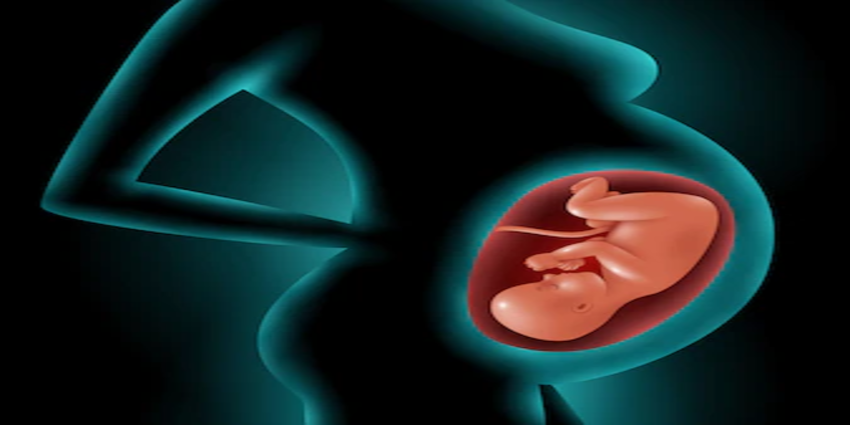An embryo or fetal development inside the uterus duration lasts an average of nine months, with 40 weeks being a normal duration for most women.
If you have been pregnant, or are currently expecting a child, it is important to understand what it means for your baby’s development. This article will answer any preconceptions that you might have about how long an average fetus is at each stage of pregnancy.
Fetal development is timed by trimesters, which are divided into three periods: the first trimester, second trimester, and third trimester. The first trimester begins at week 1 of pregnancy and ends at week 12. The second trimester is the period between weeks 13 to 28 and the third trimester covers weeks 29 to 40. As you read about these three stages below, you may find it fascinating to see how each stage corresponds to what is happening inside your body!
The pregnancy start after an egg has been fertilized, implanted in the uterine lining, and has developed into what is called an embryo.
How does the baby grow inside the womb? When do the brain, eyes, and toes of a fetus are developed? The answer is what determines fetal development is its gestational age, or how old it is in weeks. In general, this goes as follows
Fetal development during the first trimester
The first trimester is critical for your fetus to grow. Your baby’s body starts to have its structure and organ systems develop during this trimester. During this time, the majority of spontaneous abortions and birth defects occur. In this trimester, which lasts until 12 weeks gestation (or 14 weeks from ovulation), many organs are developing and beginning to form. The head grows and forms a “primitive” brain, the embryo developing its eyes, ears, nose bones, and toes.
Provided that in this time of pregnancy, your body also undergoes significant changes. These changes frequently result in many symptoms such as nausea, fatigue, breast tenderness, and frequent urination. Although these are common pregnancy symptoms, each woman’s experience is unique. For example, while some females may feel more energetic during this time, some else may feel exhausted and emotional.
Fetal development during the second trimester
This trimester is often referred to as the “golden period” because many of the detrimental consequences and effects of the first trimester disappear. You should feel less nauseated, have better sleep patterns, and have more energy during the second trimester. However, you may experience a slew of new symptoms, including back pain, abdominal pain, leg cramps, constipation, and heartburn.
This is the period when a baby’s bones and muscles grow and develop. It’s also a time when organs begin to mature more fully as well. The heart is beating by 20 weeks gestation, but often doesn’t fully function until 26 weeks gestation. By week 28 (when you may get your first sonogram), you’ll likely have a complete body plan of your baby’s face and body shape—not including added fat or muscle weight.

Fetal development during the third trimester
The last trimester is the most important period of fetal development. Brain waves are detected at around 20 weeks gestation; by 30 weeks gestation your baby’s lungs begin to function at some level of fullness but aren’t fully developed until 33 to 35 weeks. Hearing also begins to become functional at this time, and by week 37 fetal life is essentially over (but some development continues).
During this trimester the head is bigger than the body. The eyes are larger and start to open and close. The eyelids are not completely developed yet, with just a little bit of pink inside the lids. Eyelashes haven’t grown in yet either. Sebaceous glands just under the skin on the forehead secrete oil that keeps the skin moist and shiny starting to develop between the 5th – 7th months of pregnancy. The tongue is small and not fully formed. Because it’s still small, the fetus can’t really suck, but it will be able to do so after birth. The mouth opens and closes and the tongue moves around – sometimes poking out, sometimes going deep into the mouth.
The earlobes are just beginning to form but will not be completely developed. A few eyelashes have started to grow on the eyelids and may cover some of the closed eyes. Eyebrows have formed. Eyelids are beginning to open and close as though “winking” at you (it won’t always wink at you that early). The eyebrows and eyelashes won’t grow in until 2-3 months after birth. The fetus has fully formed ears and can hear.
The liver is making a large portion of bile that helps digest fats. The gallbladder stores up some of the bile when there’s extra then releases it when the stomach needs to break down that high-fat meal.
In this trimester you have reached the end of your pregnancy and you are probably very excited and nervous about the birth of your child. Shortness of breath, hemorrhoids, urinary incontinence, varicose veins, and sleeping problems are some of the physical symptoms you may experience during this time. Many of these symptoms are caused by the expansion of your uterus, which grows from about 2 ounces before pregnancy to 2.5 pounds at the time of birth.
As you read earlier the fetus goes through three different stages of development. Also, your body is continually changing you may find it fascinating to see how each stage affects your body. You should take care and visit your doctor every month.


